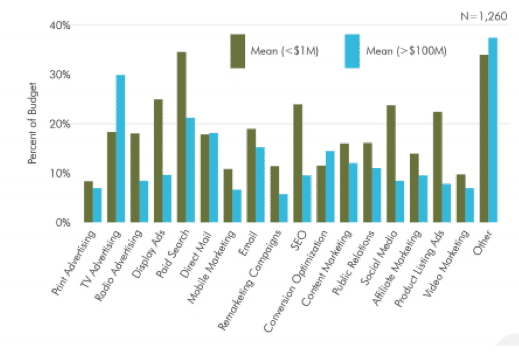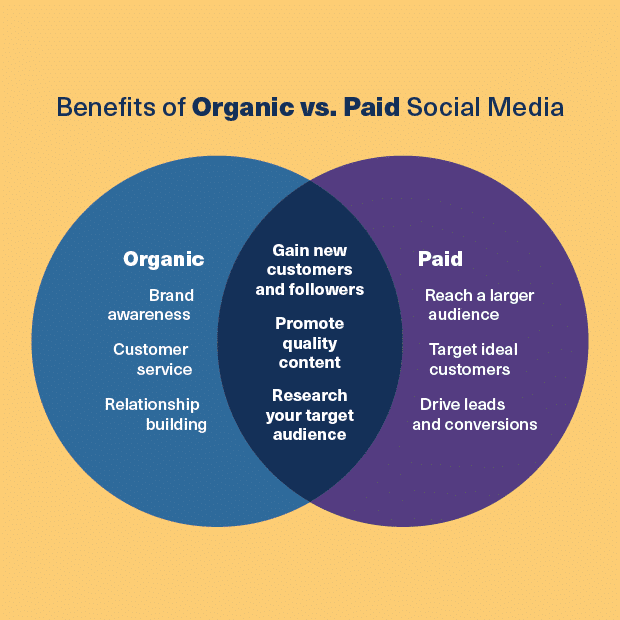Any ecommerce business knows that allocating budget can be tricky. Knowing which corners to pump money into can be more than just a numbers game. Savvy ecommerce managers may be keen to make decisions around number crunching, but it’s also a matter of thinking beyond immediate return on investment and short term gains to effectively strategize for the long term.
The truth is – ecommerce marketing is incredibly important. It’s how you get your name out there, it’s how you engage with your customers, and it’s how to elevate your brand above the competition. In short, ecommerce marketing is the path that makes those sales.
But how do you allocate budget correctly and where do you pump those funds to ensure that you get the best ROI possible? Choosing the right avenues can be intimidating, especially for new ecommerce businesses who are already working on a shoestring. Fortunately, we have some tips to help you unpick the details and split costs with success.
First: Define your budget
Before you can start splitting the budget, you need to define exactly what your budget looks like. A general rule of thumb recommended by economists is that you put between 7-12% of your total revenue into marketing. This means your marketing budget can grow alongside you and boosts your visibility as your business grows. It also discourages you from getting carried away and pumping funds into overzealous marketing campaigns.
If you are a young ecommerce company, you may want to allocate closer to 12-20% of your annual revenue on marketing in an effort to speed up growth. Of course, this isn’t a hard and fast rule, as small businesses or ecommerce startups who are operating at a loss may not find it practical to pump this amount of money into their marketing.
However, these companies still need marketing for growth, so a good alternative would be to use a fixed budget for ecommerce marketing. Even a fixed budget can fluctuate on a monthly basis according to what kind of ROI you are experiencing.
Know your goals
Working out your budget will really depend on your finances and your goals with ecommerce marketing. It’s essential to map out a marketing plan so you can see which direction you want to take your online business and which ecommerce marketing touchpoints will connect the best with your own target consumers.
For example, if your target market is a younger tech savvy crowd, you may want to allocate more revenue to social media campaigns. For those who are looking for more visibility, then it may be best to direct costs into search engine optimization (SEO).
Track your data
Knowing your budget and your goals is a great foundation, but there’s another building block not to be ignored. Knowing where your gaps are. Tracking your existing data provides great insight into helping you understand where your marketing budget needs to go.
It can tell you which channels your customers are coming through, where the bounce rate sits, whether you are having more success with new customers or repeat customers, and overall it can pinpoint where your conversion rate is working.

Understand outgoings
Knowing where your ecommerce marketing expenses will be going can make it easier to plan. There are a lot of moving parts in marketing and here are some constant expenses you should look to cover:
- Staff salaries – for ecommerce marketing teams, freelancers, content creators, SEO experts, etc.
- Monthly marketing subscriptions – website and video hosting, social media management tools, etc.
- Campaigns – social media ads, Google Ads, content creation
Where to put your money
One of the golden rules when it comes to allocating budget for ecommerce marketing is not to put all your eggs into one basket. That is, don’t use your entire budget on a singular campaign or channel.
If you invest all your finances into one social media platform and then the rules change or you get hacked, then your whole budget could be wiped out without return. The same can be said for SEO rankings – all it takes is for Google to change up the algorithm and you could suffer a setback.
That’s not to say you should carve up your budget equally across all channels, but spreading the costs across different marketing channels and strategies could be a less risky solution.
Here are some places where you can expect your marketing budget to go:
Organic marketing
Ecommerce brands tend to spend up to 24% of their marketing budget on SEO and for good reason. You can have a great product and set up but it doesn’t matter if no one can see it. Search engine optimization helps you to climb that visibility ladder. Organic ecommerce marketing will cover written content, visual content, SEO, social, and influencers. Basically, organic marketing is any marketing that doesn’t contain paid ads.
Email marketing
Investing in email marketing as part of your ecommerce marketing budget can have a huge ROI. One in four marketers say that email marketing accounts for a quarter of all their sales.
By creating newsletters, campaigns and promotions, and weaving in the personal touch to your email marketing, you can engage customers and enjoy a high conversion rate when done right.
Ads (PPC and social media)
Paid ads are where your ecommerce marketing budget can suffer a serious hit, and this is where many ecommerce companies will spend around 40% of their marketing budget.
The benefit of both pay-per-click (PPC) and social media ads is that they can be targeted to a tee, meaning that you can dramatically boost your chances of connecting with your target audience. There are definitely pros and cons to PPC as clicks that don’t convert are basically lost funds, and depending on your budget, social media ads may help you reap rewards with less risk.
Bonus: Optimization
You may also want to consider allocating some of your ecommerce marketing budget to optimizing what you already have. Driving customers towards your ecommerce site or store is greatly beneficial for growth, but if they have a frustrating experience when there, it won’t convert into anything of value.
Make sure that your website user experience is as flawless as can be and that your site and existing content are optimized to their fullest potential. For more information, read our comprehensive guide to ecommerce marketing, or to request a tailored consultation to see how far your budget can carry your ecommerce marketing plan, contact us today.




